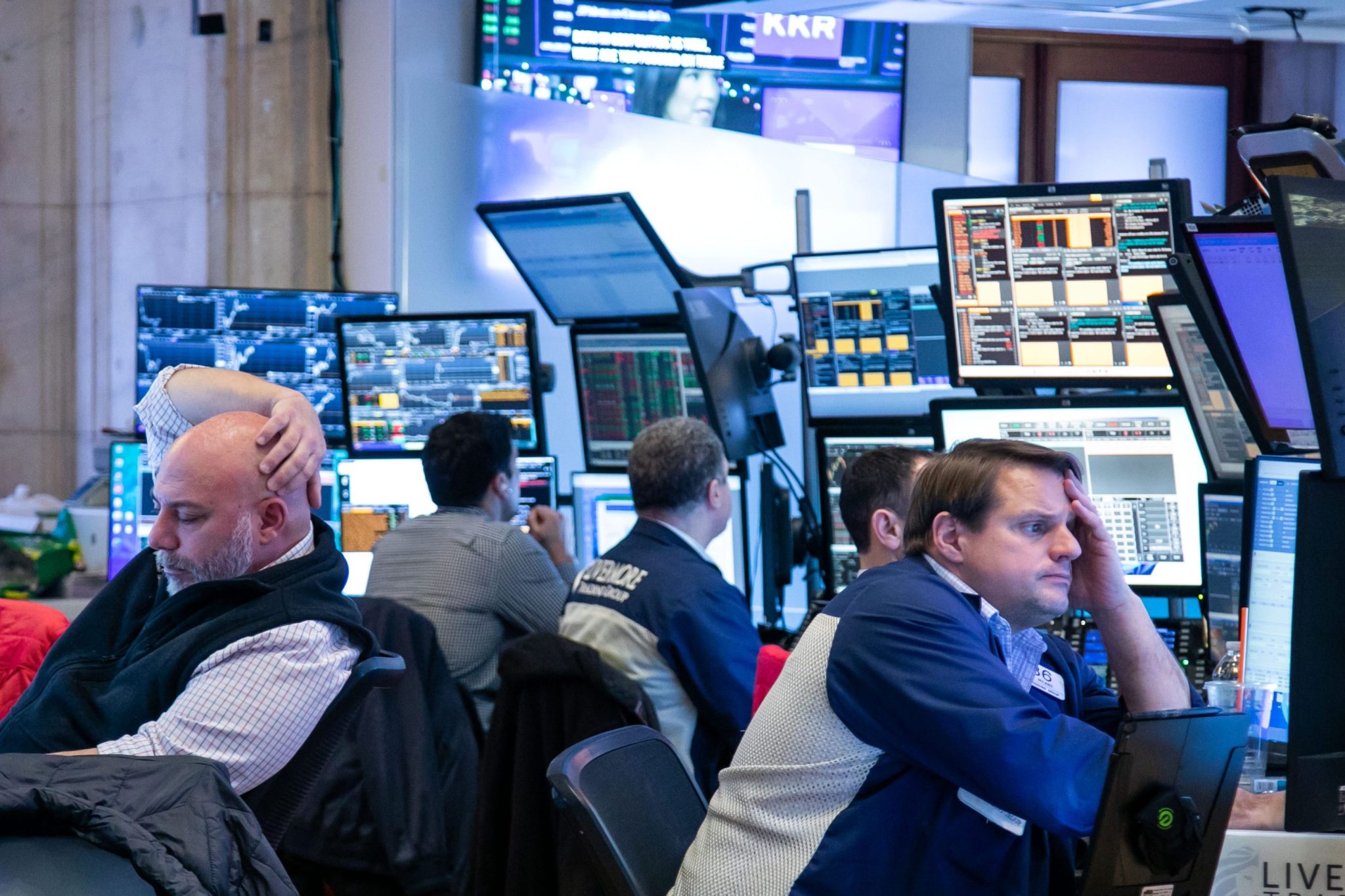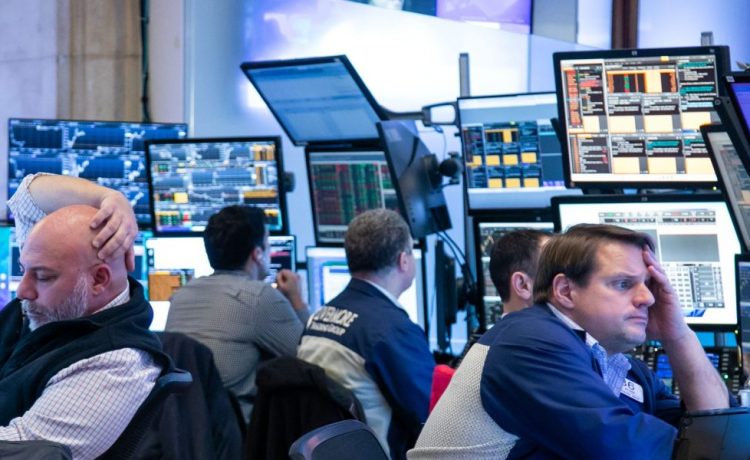
“It’s fair to say that financial markets have started 2024 with something of a mild hangover,” Jonas Goltermann, Capital Economics’ deputy chief markets economist, said in a Wednesday note. Indeed, as normal life resumes in 2024, the stock market’s early returns are sounding a different tune to their surge in 2023. The tech-heavy Nasdaq Composite is seeing the worst of it, falling more than 1.5% in the first two days of trading this year after soaring nearly 40% in 2024.
Goltermann cautioned against “reading too much into” stocks’ performance in the first couple of days of trading in the new year, but argued that it makes sense to think about “plausible explanations” for the drop and “what they imply for the year ahead.”
The economist highlighted three key reasons why stocks are experiencing a slight misstep on what seemed to be an inevitable and imminent rise to a record high just days ago. Some of Goltermann’s reasons are benign, but some could have serious long-term implications for the global economy and markets.
1 – Consolidation is natural after big gains
Let’s start with the benign. To put it simply, stocks don’t move in a straight line. Even when the economy is booming and all the right conditions exist for equities to soar, there are always down days.
In the final few months of 2023, however, stocks bucked that trend with an incredible run of form. The S&P 500 rose for nine consecutive weeks to end 2023, the longest streak of gains in 34 years. So why are stocks down in the new year?
“The first and simplest explanation is that after a torrid rally across most asset classes over the last two months of 2023, a period of consolidation or correction was always likely at some point,” Goltermann explained.
Jay Hatfield, CEO and founder of Infrastructure Capital Management, noted that trader psychology—and the tax advantages of taking profits in the new year—are playing into the ongoing period of market consolidation. “We had a big run up, so everybody has a bunch of gains. So they’re all saying: ‘Markets kind of look weak, why don’t I take some gains?”
Despite the recent downturn, Hatfield said that his bullish outlook for stocks—which includes a 5,500 year-end price target for the S&P 500—“remains intact.” The recent underperformance is just a “normal” period of consolidation after last year’s surge, in his view, and not a harbinger of worse things to come.
2 – Fears over a ‘less favorable’ outlook from central banks
But there may also be less benign reasons behind the stock market’s current weakness. Capital Economics’ Goltermann fears that investors celebrating the end of the Federal Reserve’s interest rate hiking campaign in December may have been surprised by more hawkish rhetoric from Fed officials this week. “Policymakers have … sought to push back against the perception that rate cuts are imminent,” Goltermann wrote, pointing to recent comments by Richmond Fed president Thomas Barkin.
Barkin said in a speech in front of the Raleigh Chamber of Commerce Wednesday that although a “soft landing” is now likely, Fed officials could still raise interest rates further in the coming months if inflation remains an issue. “Perhaps that message is starting to cut some ice,” Goltermann wrote, implying some investors believe there could be fewer interest rate cuts than they previously forecast this year, which would weigh on stocks.
Still, the idea that the Fed would hike interest rates is “highly implausible,” according to Capital Economics. “We think the Fed, and most other major central banks, will start cutting policy rates before long,” Goltermann wrote.
To his point, the Federal Open Market Committee’s (FOMC) meeting minutes released Wednesday showed Fed officials believe they’ve made substantial progress in taming inflation and expect to cut interest rates, but they still can’t agree on the timing and depth of those interest rate cuts. There was an “unusually elevated degree of uncertainty” around the policy rate path, the minutes read—and that still has some investors worried.
The FOMC minutes were “quite a bit more hawkish” than Fed Chair Jerome Powell’s December press conference, Jefferies’ senior economist Thomas Simons explained in a Wednesday note, arguing language was often “contorted” to avoid “dovish phrasing.”
3 – Disrupted shipping routes in the Red Sea spark inflation concerns
Finally, tensions in the Middle East remain high as Israel continues its bombing campaign in Gaza. Houthi militants have attacked cargo vessels in the Red Sea, a critical juncture for global supply chains. Roughly 15% of the world’s shipping traffic makes its way through the Red Sea each year, including oil tankers and container ships transporting everything from semiconductors to grain
In an escalation of tensions over the weekend, U.S. Navy Helicopters destroyed three Houthi boats after an attack on a shipping vessel; Iran has responded by deploying a warship.
Shipping giants, including Maersk and the Mediterranean Shipping Company (MSC), have suspended operations in the Red Sea as well, forcing many container ships to go around South Africa in order to deliver cargo to the West. The fear is that increased shipping costs and supply chain issues from the Red Sea Crisis will lead to renewed surge of inflation, but Capital Economics’ Goltermann said that’s unlikely. The real risk is that the Israel-Hamas war “escalates to a wider regional conflict.”
“Such a development could have more serious implications for the global economic outlook, including the potential for another energy price spike that might set back the timing of monetary policy easing – with negative consequences for most asset prices,” he explained.
Despite rising tensions in the Middle East, further escalation of the conflict among oil producing nations isn’t a big concern for Goltermann. And the threat of higher than forecast interest rates this year isn’t enough to change his bullish outlook for stocks either.
“On balance, we think the big picture remains constructive for both bonds and equities,” he concluded. “Some further near-term turbulence may be likely, but we think that the shift towards less restrictive monetary policy will be the dominant theme of 2024.”







